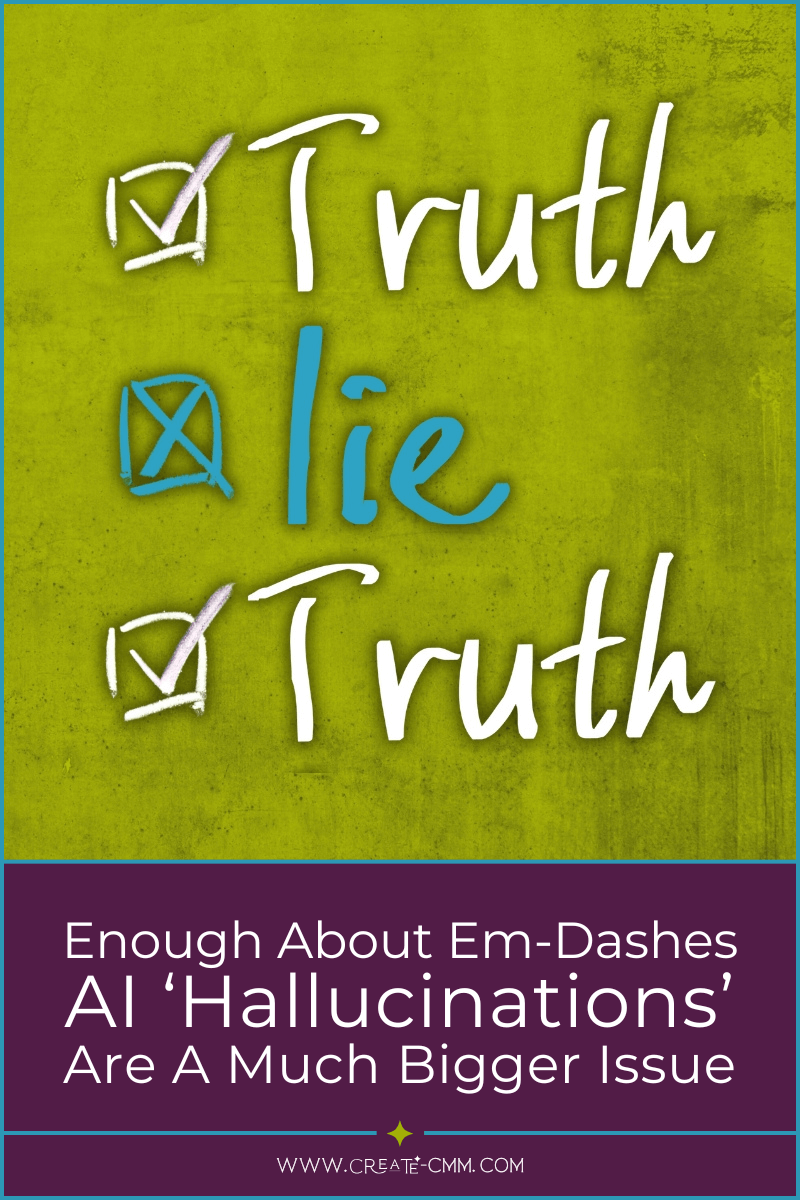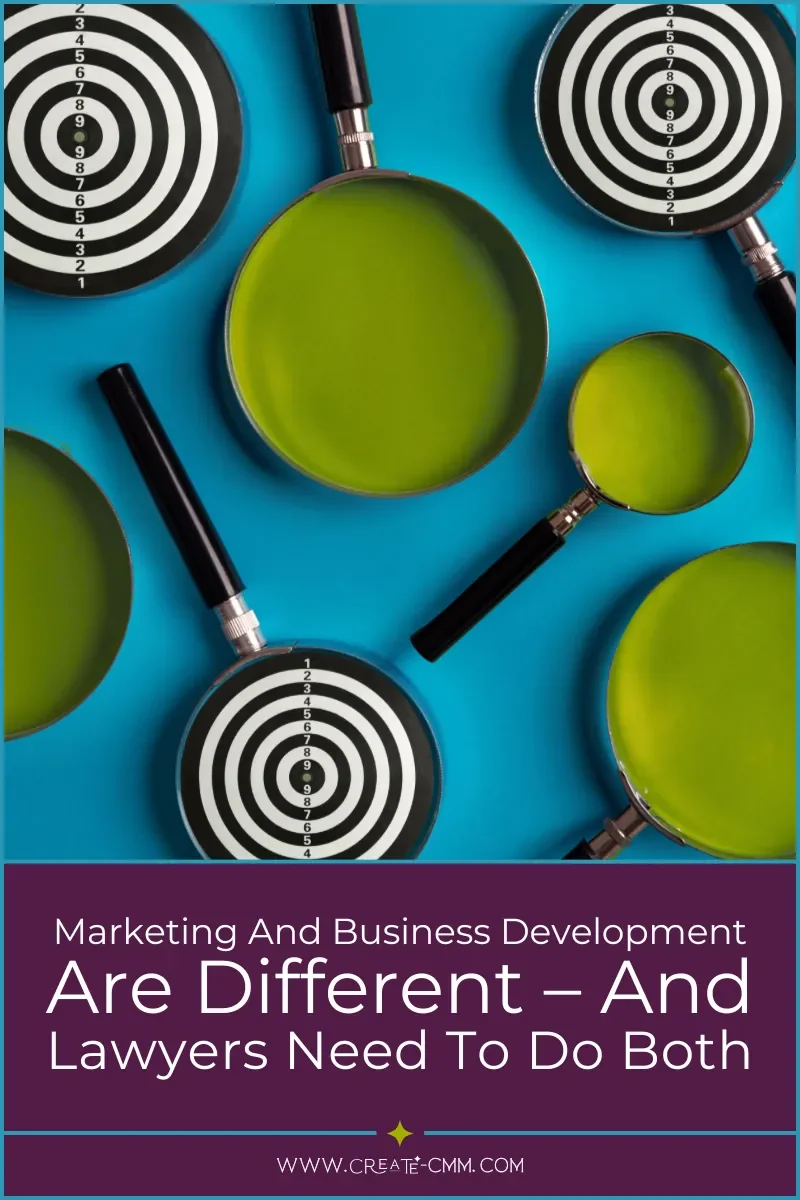Uplevel Your Content Marketing In A Crowded Legal Marketplace
“The reports of my death have been greatly exaggerated.” — Content Marketing
Over the past few weeks, I’ve heard a few statements about content marketing, including:
Content marketing is dead.
We’re not getting clients from our blog/alert/article/video, so why bother?
We need content to send to the contacts on our mailing list to get them to hire us.
These statements, and the many more I hear and read, result from some myths and misunderstandings about how content marketing works.
Let’s start by dispelling the big myth: Content marketing is not dead.
But it has evolved — and it’s more challenging than ever to “win” at content marketing.
Long before we had blogs, branded client-impact alerts, videos and podcasts (and terms such as “thought leadership” and “content marketing”), lawyers wrote articles and spoke at conferences.
Why?
Because the relationship between lawyers and clients is based on trust and expertise.
Content remains one of the most effective ways to build and maintain a trust relationship with clients and prospects at every stage of their hiring journey, from “not even thinking about hiring a lawyer” through “looking around” and “evaluating options” to “ready to make a hiring decision.” Content is also critical in the post-hiring phase, to nurture relationships with existing clients not only so they continue to send you and your firm more and better work, but also so they become referral sources for you.
How does content marketing do this? By providing valuable, informative and actionable content that highlights your expertise.
The “why” of content marketing hasn’t really changed since Alexander Hamilton (said to be the original “Philadelphia Lawyer”) practiced law.
But the “how” has — and that’s where the challenge comes in.
Owned platforms (e.g., blogs, websites and microsites) and quasi-owned platforms (e.g., social media, YouTube), as well as CRM systems for reaching into the inboxes of clients and prospects, allow firms to publish more content — and a wider range of content — than ever before. The result is a wealth of great resources — and a tremendous amount of clutter and noise in inboxes and across the internet.
How can you use content to cut through the noise and distinguish yourself from your competitors?
Here are some tips:
Build Your Content On Pillars
At their most basic, content pillars are the broad areas on which you focus your content. I didn’t invent the term, but I like the visual of the pillars “holding up” your content marketing strategy. Other people call them buckets, clusters or hubs, but the concept is the same. Consistently generating content around your content pillars will help clients and prospects see you as an authority and trusted resource in these areas.
Your content pillars should be four to (maximum) six core subjects that align with your areas of practice or industry focus and that allow you to demonstrate your expertise. To be effective drivers of your business development objectives, they also have to intersect with the information your target clients and referral sources are looking for. Think of it this way: If you’re writing on topics in your practice or industry but aren’t answering the questions your clients are asking or providing solutions they can use, that content pillar is not a great support for your marketing efforts.
Each of your content pillars can comprise several related topics and subtopics, and can encompass a variety of content types and formats. You can also use your pillars to evaluate writing and speaking opportunities. If it doesn’t align with one of your content pillars, don’t spend your time on it.
Defining your content pillars does take some thought and perhaps a little research. The good news is that you probably already have a good idea what they are and just need to spend a little time making your pillars more concrete (pun 100% intended).
Find The Right Content Mix
Your content pillars can help you answer part of the “what” of your content marketing: What should my content cover?
The other part of the what is this: What kind of content should I be putting out?
Content is not one-size-fits-all. You’ll need a mix of content for each content pillar.
There are many ways to categorize and organize content. One simple way is to divide your content into two basic substantive categories: “evergreen” and “not evergreen.”
Evergreen content remains relevant to your audience over time, with little or no need for updating. Content that is not evergreen has a shelf life after which the information becomes stale or perhaps even inaccurate.
Within those two categories, there are more nuanced ways to think about the “time value” of content, including:
“Breaking news” alerts (This happened! Here’s what it means and what you should do now.)
Deeper dives into legal or industry trends and developments. (This new employment regulation is part of a larger, national trend.)
Look-backs, roll-ups or year-in-review pieces. (Here are the most important IP cases from the past year, and here’s what might be on the horizon.)
Deadline- or date-driven content. (This law — which we reported on last year — goes into effect next month, and here’s what you should be doing to get ready for it.)
Event-related content. (Content linked to or scheduled to coincide with a firm, industry or legal association event.)
Fill-in-the-blanks or “in case you missed it” (ICYMI) content. (Why are we talking about this topic? Here’s some background and/or other content we’ve written on it.)
Instructional content. (a deeper dive into the basics of a topic than ICYMI content, such as a white paper or resource guide.)
As you can see, there is overlap between the evergreen and not-evergreen content in this list.
In addition to thinking about your content from a temporal perspective, you should also think about it in terms of format, media and platforms/channels.
In other words: How will you package your content and where will you deploy it so your target audience(s) can find it?
Written content is the most traditional and covers a long list of formats, from client alerts and newsletters to blogs, articles, Q&As, FAQs and checklists, resource guides, and white papers, to name a few. Visual content can include infographics, videos, live or recorded webinars/seminars, and slide decks/SlideShare presentations, and audio can include live/recorded interviews and podcasts. Of course, many of these formats are or can be hybrids that overlap categories.
Where your content will be placed will also influence the type and format of your content — and requires you to consider where your target audience is looking to source their information. In today’s digitally driven world, firms have an array of “owned” (or quasi-owned) channels: firm websites; dedicated insight pages or knowledge centers (whether on their website or a branded microsite); blogs (on or off their website); mobile apps; social media (LinkedIn being chief among the platforms); YouTube channels; podcasts; and outbound email. They can also choose to leverage legal knowledge platforms (PLI, for example) and content aggregation services (Lexology and J.D. Supra are two examples), as well as third-party media and industry-specific channels.
Align Content With Business Development Goals
Content marketing is about keeping clients and prospects in your “orbit,” providing value and building trust, until they reach the “ready to hire” stage. Visibility and awareness in the marketplace are the overarching goals. That said, specific types of content work better for different stages of the buyer’s journey (sometimes called the sales funnel or client pipeline). This is often where the confusion around being able to get clients directly from a blog/alert/speaking engagement/email occurs.
The most effective and appropriate types of content also depend on your business development strategies. For example, if one of your growth strategies is to attract clients in new markets or industries, your focus would be on developing content and using channels that would extend your reach and generate awareness with new and different audiences in those markets. In contrast, if you’ve identified as an objective deepening your relationships with certain existing clients to get more and better work from them, then your focus would be on providing value-add content in channels you’ve already established with those clients, such as email, webinars and perhaps even premium access/client-only areas of your firm’s website.
The nuances of how content impacts the buyer’s journey require more than a couple of paragraphs in a broader article such as this one, so stay tuned for future columns.
In the meantime, remember: Content marketing is not dead — long live (good) content!
Featured Articles





